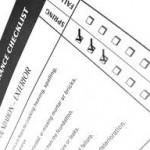By SF Bay Homes
10 Best Ways to LOWER your Homeowner’s Insurance Premiums
Every homeowner wants to LOWER your Homeowner’s Insurance Premiums. Here’s my secret list in order of what you can do first. If you have further questions about your specific situation, please contact SF Bay Homes, and we’d happy to help you. 650-346-7366
1. Do some simple Homework

Begin by asking friends and family, then maybe ask co-workers and neighbors which Homeowner’s Insurance companies they prefer. Also, ask what they know about how to LOWER your Homeowner’s Insurance Premiums Other resources are the Yellow Pages, the State Insurance Department, and the National Association of Insurance Commissioners, which has information on their website that will help you decide which insurer is best for you at the lowest possible premium per month. It will also give you access to the complaints filed against insurers, so you can decide which is best for your needs.
Other great resources to check are Insurance Agents, Consumer Guides, and Online Premium Quotes. You will discover a large price range of premiums from one underwriter to the next, so knowing what’s being offered will leverage your negotiations with terms an Insurance company you’ve decided on. But, just because you found the lowest premium out there, that does NOT mean the coverage is equal to another policy a few bucks more per month. All Insurers are different, based on your qualifications they should tell you what they can save you per month. So, compare what’s out there “apples to apples”, otherwise you will run into problems down the road when it comes to filing your damage claim when disaster strikes! Make sure you understand what your policy covers, so you have peace of mind.
2. Increase your Deductible
Most people are familiar with Deductibles, it’s the money you pay before your insurance company paying a claim for any damage caused to your home, car, motorcycle, boat, etc… A $500 dollar deductible is pretty standard, but if you increase it to $1000, you can save up to 25%! The higher your deductible the lower your premium goes. For those that live in disaster prone areas, you will have separate deductibles per disaster category. So, if you live in Southern California, you may need earthquake, flood, fire, and termite, plus or minus, which covers 4 different areas. So, weigh the Pros and Cons of increasing your deductible, because if the disasters occur often, then your best interest to keep paying a high deductible every time something happens may cost more. The good thing is, the Insurer will usually let you adjust it up or down by contacting them, but we don’t suggest doing it too often because your payments will change.
3. The Cost of your Home is not equal to Rebuilding It!

Many Home Owners will pay for the land under their home, which inflates the price and is not needed. The land will always be there, but what’s on top is what’s important! Your Home is subject to brush fires, flash floods, earthquakes, ice storms, hail, etc., and that’s what needs insured against damage. So, stop paying for something that isn’t benefiting or saving you anything and LOWER your Homeowner’s Insurance Premiums, unless you live over a potential sink hole.
4. Bundled Pricing on your Insurance Coverage.
Consolidating your insurance policies by using one homeowner’s insurance company can save you a considerable amount each month. Many insurers offer Home, Life, Auto, Boat, and Travel insurance all in one place that give you discounts based on how many policies you have with them. But, it never hurts to check around, because other insurers may have features to their policies that may suit your needs better. Your insurance company wants to keep your business by offering you a better deal than its competitors, which is why they offer you Bundled Pricing Packages.
5. Fortify your Home from Disasters!

If you are proactive about your home, and keep it protected and safe. You can take steps to insure your home from the disasters your area is prone to. Using our Southern California home example, you would most likely treat your home with a fire-retardant, then replacing your roof with a 20-25 year roof that withstands fire, if needed. Clearing away any dry brush and creating a relief zone, growing vegetation on barren hillsides to prevent landslides, retrofitting your home for earthquakes, updating the plumbing, heating, and electrical systems which can cut the potential risk of a short-circuit fire, or water damage from fractured pipes.When your home has the needed upgrades your insurance carrier will LOWER your Homeowner’s Insurance Premiums as part of their policy.
6. Increase Home Security and Safety
By installing a Home Security System, Homeowners can receive discounts up to 5% for dead bolt door locks, window locks, automatic gas shutoff valve, smoke detectors, gas detectors, home alarm systems, and home security services. If you have a good fire extinguishing system and a burglar alarm that contacts the police and a home security service, you usually get an extra 15%-20% off your monthly premium. This is due to the system or service costing a lot, so decide whether it’s worth the savings. One thing we recommend before buying anything is to ask your insurer which companies they recommend, how much it would cost, and what kind of discounts you could expect when finished.
7. Search more Discounts
Discounts being offered from most of the top insurance companies, but they are not the same when compared. If you are 55 and retired, then you’ll probably get a 10% discount just for that. It will differ depending on who you go with in the end. Your current insurer will try to keep your business, so check with them first, then begin looking at what the other insurers have to offer. Compare coverage plans, your needs, and whether it gives you a worthwhile discount, then purchase the policy that is best for you.
8. Perks for Good Credit!

Having a strong credit history will allow you to cut your insurance payments. Insurers use your credit history to decide your homeowner’s insurance premium, so the higher your FICO scores go over a 2 year or longer period, the better the discount. Insuring your FICOs stay strong, be sure to make your payments on time, not to incur any 30/60/90 day late, not to incur too many inquiries within 90 days, along with keeping your balances as low as possible, over paying the minimums to pay off the debt quicker, and possibly parking some cash in a bank to season it for a rainy day.
9. Loyalty Pays!
If you are like most, you have probably stayed with the same insurer for a good number of years or decades. Insurers reward loyalty by offering extra discounts of 5% to 10% depending on how many years you’ve been with them. You can start receiving discounts at 3, 5, 6, or more years with the same insurer. But, it never hurts to check what others are offering and compare the two, so you know you have the best policy for your needs at the lowest possible price.
10. Take Inventory of your possessions and compare it against your coverage

Be sure your policy covers all of your major purchases as well as renovations to your home. Any items that have depreciated over the years like a silk dress, computer equipment, or jewelry that might need adjustment down in value to cut your premium, or you can cancel your floated policy if it’s not needed anymore.
EXTRA BONUS: Here are 2 Bonus Tips to help you lower your Payments!
Bonus 1. Private Insurance is better than Government Plans
It might be worth your time to look at Private Insurers as opposed the Government Plan you are now on. Governments are not always the best plans to have especially if you live in disaster prone areas. Private insurers can offer LOWER your Homeowner’s Insurance Premiums, better terms and coverage on the average, so start by contacting various insurance agents and get quotes. You can always contact the State Department of Insurance for insurance companies that might be interested in insuring you.
Bonus 2. Cost of Buying a New Home
When purchasing a new home, buyers need to consider what the cost will be after the smoke clears. First, there’s the cost of mortgage, taxes, and insurance. Second, would be any repair or rehab costs, location costs like being close to a fire station, and anything you didn’t figure into the overall cost. Even the materials used to build your home could save you money, for instance if your home has earthquake, fire, flood, and theft code compliance, then you can save about 5% to 15% depending on building materials used.
If you are thinking of buying a new home, you should ask a CLUE report (LexisNexis) for the home you want to buy. The reports show insurance claims for that property going back 7 years, which will help you decide if that home is worth purchasing based on its history.
Residential – $250,000 for the structure, and $100,000 for personal property is the max insured.
The average flood insurance cost averages $400/yr. There are 2 ways to get flood insurance:
1. Through a state licensed property & casualty insurance agent or broker who deals directly with FEMA.
2. A private insurance company that uses a program created in 1983 called “Write Your Own”.
For those living in California and in designated earthquake zones, you can go to the California Earthquake Authority for more information and insurance coverage.
Lastly, if you run a business out of your home, be sure to get business insurance. The standard payout is about $2500 max on your homeowners, which doesn’t cover the cost of the computer alone, so be sure you are getting enough coverage so that your home and business are both secure.
We at https://www.sfbayhomes.com hope this Guide to LOWER your Homeowner’s Insurance Premiums is helpful. We at SF Bay Homes are open to any questions you may have. Please contact us for any of your real estate needs in the SF Bay Area, and we’d be happy to help.
#sfbayhomes #home insurance #siliconvalleyhomes #realestateagent

